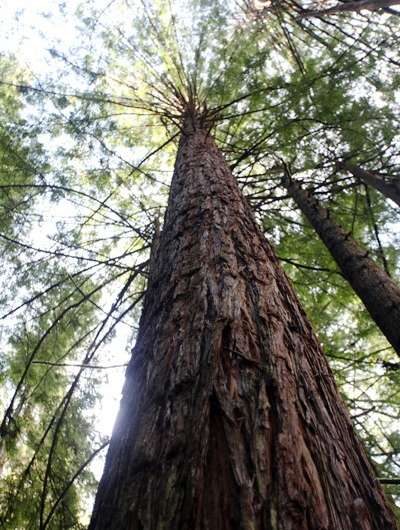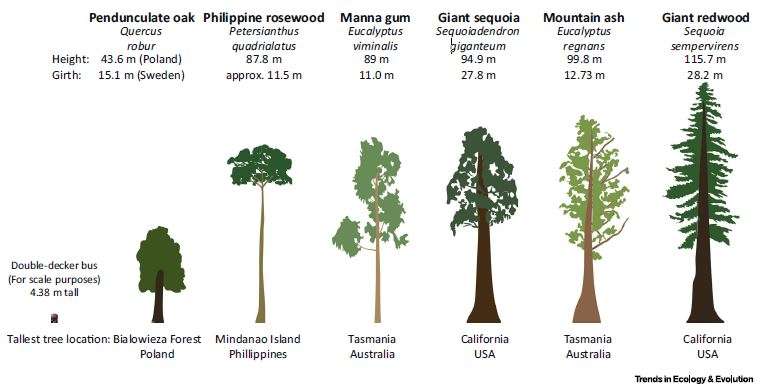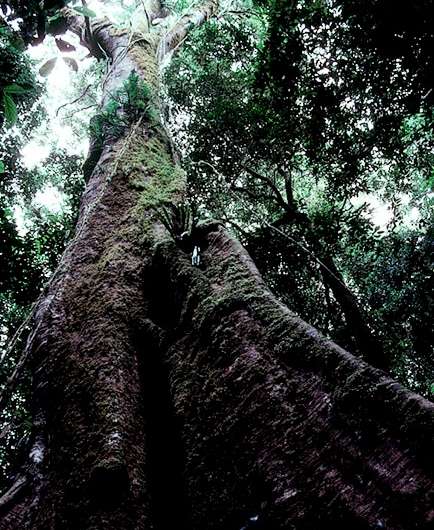The unique challenges of conserving forest giants

The redwood and sequoia trees in California, the baobab trees in Madagascar, and the rose gum Eucalyptus trees in northeastern Australia are only a few of the spectacular large, old trees still growing today. Protecting these trees, some hundreds or thousands of years old, requires thinking long-term about concerns such as their unique habitat needs and the impacts of climate change, researchers write in a Forum published April 22, Earth Day, in Trends in Ecology & Evolution.
"How many of us as children have stared up at a cathedral-like crown in wonder, or climbed a giant tree and just had that be a really special part of our lives?" asks Bill Laurance, a tropical ecologist at James Cook University. "These big trees are just taking it in the neck from every direction.We're dealing with organisms that have evolved for long periods of ecological stability, and that's becoming a really scarce commodity in the world in which we live."
"There's a lot to discuss on the issue," says David Lindenmayer, a conservation ecologist at the Australian National University. "Climate change will mean that, in some places, big trees will not reach the same sizes they used to." The effects of climate change, including prolonged droughts, more invasive species, new pathogens, and habitat fragmentation, compound the simple physical challenges that large trees already face in pulling water from their roots to their leaves and withstanding windstorms.
Lindenmayer and Laurance define "large, old trees" as the largest five percent of sexually mature trees within a species. The flexible definition means that in some forests, the large, old trees might be only 20 meters tall and 100 years old, but the big trees might be taller than a football field is long in other areas, and over 2,000 years old.

These large, old trees dominate the surrounding plant communities, affect water and nutrient distribution, and provide food and shelter for wildlife. "They're really the breadbaskets, the supermarkets, of the forest," says Laurance. "This is a very environmentally and ecologically important group of organisms, and they need special care and handling."
Identifying the distribution and habitat requirements for large, old trees in the landscape is a first step towards ensuring their survival, say Lindenmayer and Laurance. Conservation efforts may take shape as preserving large swaths of forest or as maintaining single trees in urban environments, with further innovations for trees that exist as small clusters or individuals in savanna or desert regions.
"We have to ensure that we're thinking long-term, to match the way these trees have existed for hundreds or even thousands of years," says Laurance. "It's going to be a real challenge to maintain some places in the world that still have something like a wild nature—that still have natural wildlife, seed dispersers, pollinators, large predators, and the magnificent cathedral-like trees that we all really care about."

More information: Trends in Ecology & Evolution, Lindenmayer and Laurance: "The unique challenges of conserving large old trees" DOI: 10.1016/j.tree.2016.03.003
Provided by Cell Press


















